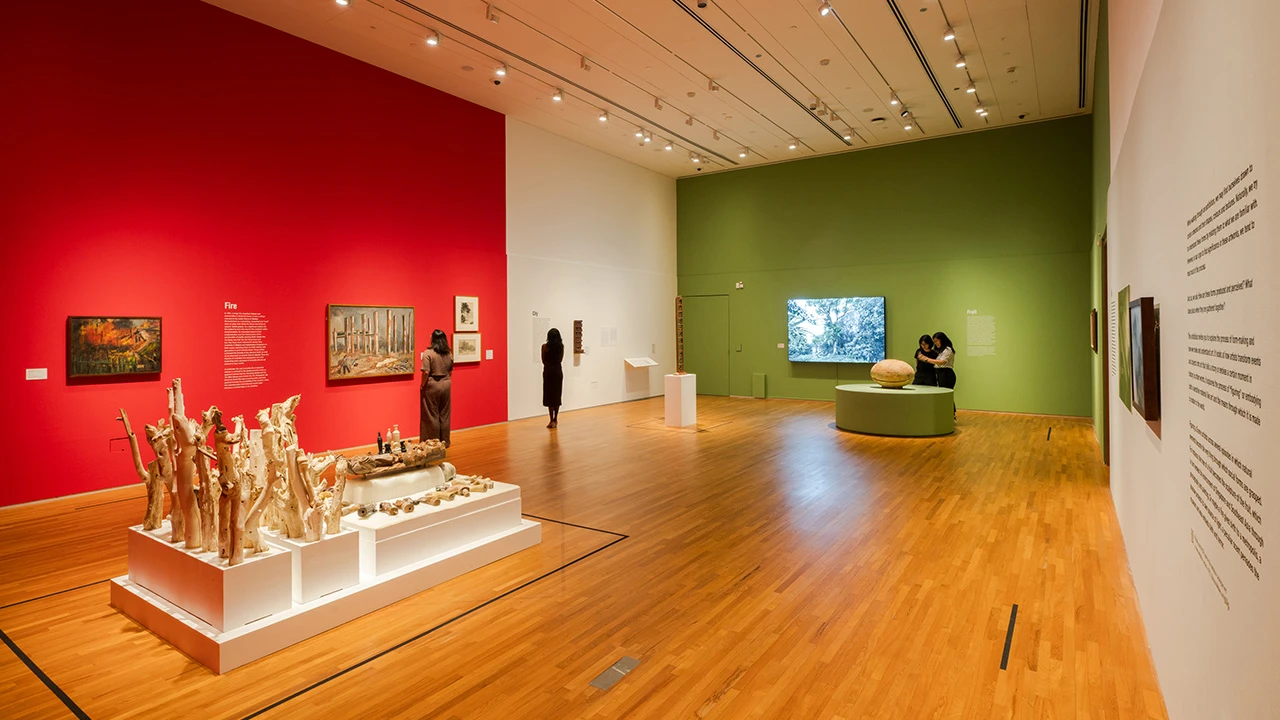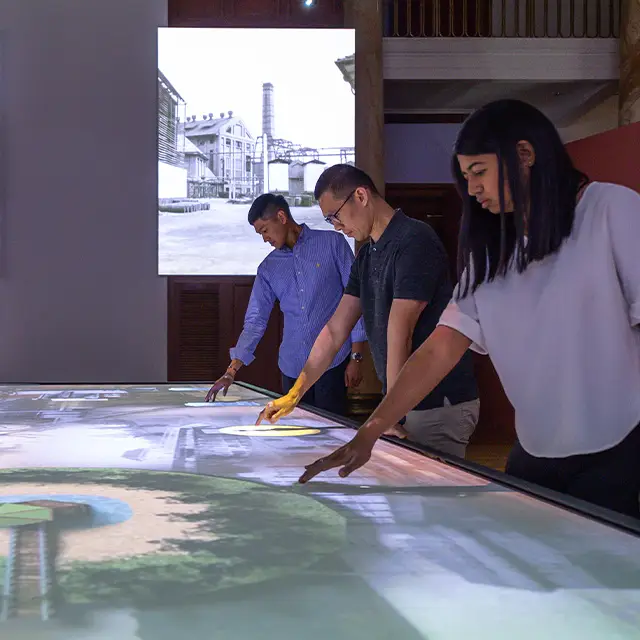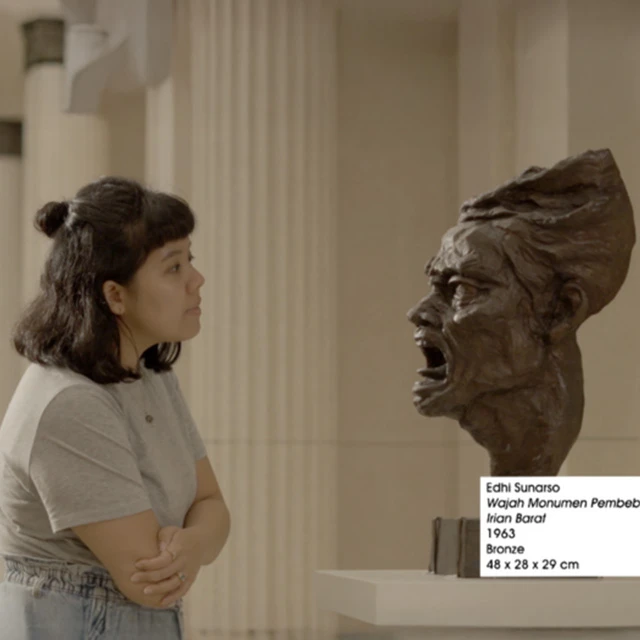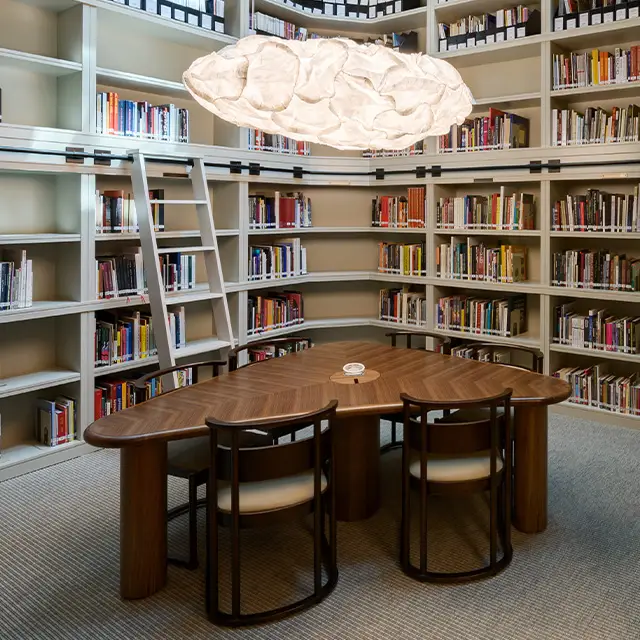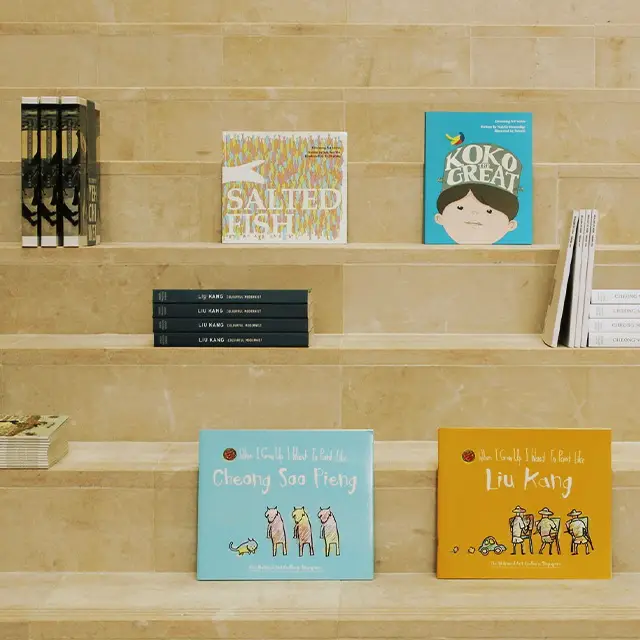Sharon Chin juxtaposes nature and technology in her art. Her artwork, Creatures on the Move (In the Death of Night) features linocut prints, which were initially used for book illustrations. These later became protest placards and workshop materials, before being remade into shadow puppets for the exhibition Dalam Southeast Asia: Figuring A Scene.
Appreciating the Art of Art Forms – Is making a copy of art also art?
Printmaking is making a comeback, but is a printed copy considered art? Learn about printmaking and its evolution through the years.
Share
So here, on a gallery wall, are 20 identical Merlion prints an artist made and assembled. In the gallery shop, there is a collection of mugs with the Merlion printed on each. Are they considered art?
Yes and no.
Yes, copies printed by the artist, with artistic intention from an original, is art.
No, copies mass-produced by a non-artist for decoration, commerce, or fun are not art.
In short, there are prints that are art, and prints that are not.
Jump to a section:
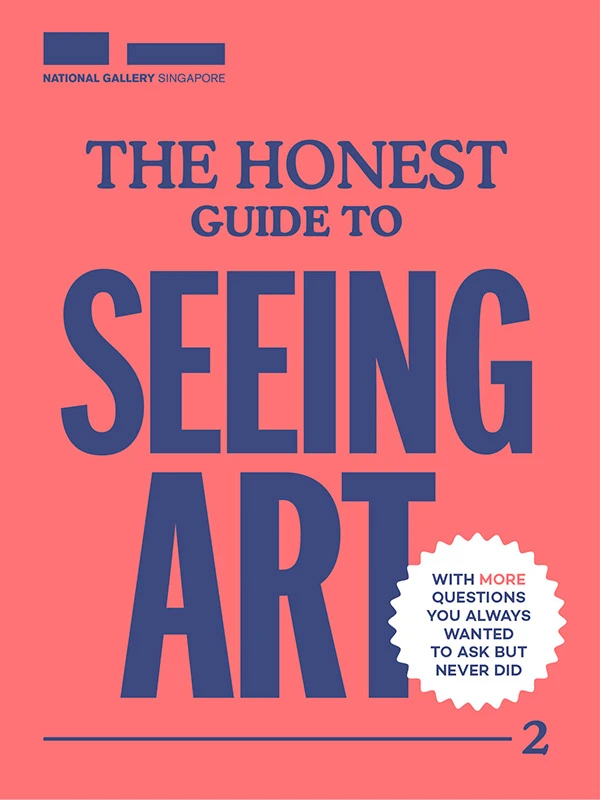
You’re reading an adaptation of our booklet, The Honest Guide to Seeing Art, part 2. Pick up your free physical copy at the Gallery!
The birth of printmaking

It all began around 3400 BC when the Sumerians of Mesopotamia made engravings on cylinder seals and rolled them over clay to create impressions.
Afterwards, other kinds of prints were made around the world, including Egyptian block-printed textiles and Chinese stone rubbings.
Around 600 AD, the Chinese invented woodcut/woodblock printing and combined it with their earlier inventions of ink and paper (105 AD), that made printmaking come into its own.
The Chinese printed the world’s first newspapers (713 AD), first book (the Buddhist Diamond Sutra, 868 AD), and first banknotes (960−1279 AD). They also created movable type (1040 AD), where individual pieces of ceramic carved with single Chinese characters could be assembled and reassembled to form printable pages.
The worldwide spread of printmaking
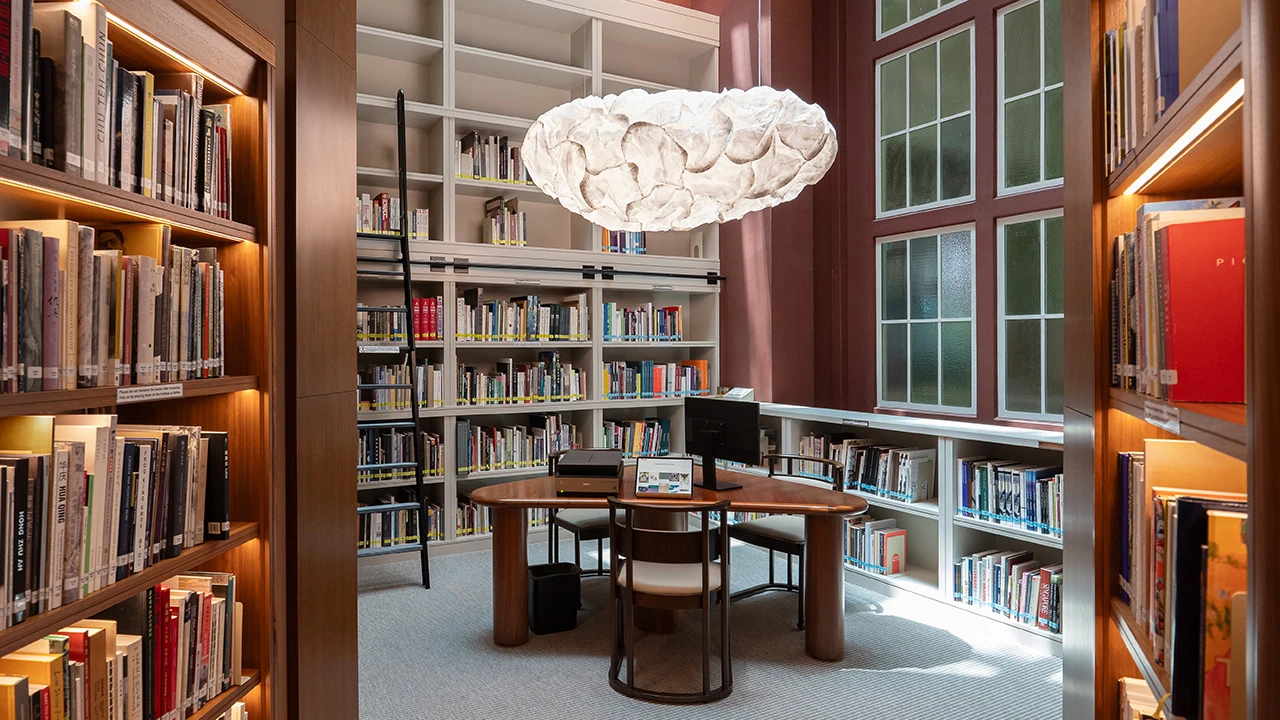
From China, woodblock printing and movable type travelled to Korea and Japan.
Printmaking picked up speed across East Asia. This enabled the mass printing and dissemination of documents, business cards, and paper money, paged books of Buddhist scripture, Confucian teachings, mathematics, art, and classical literature, replete with text and art.
Before woodblock printing on paper arrived in Europe in the 15th century, handwritten, hand-painted manuscripts were the norm. Works of art were artefacts, seen only in churches or palaces.
When European printmaking began, first with woodcuts, then intaglio metal engravings, only mono-coloured religious images, block books and playing cards were printed.
The Printing Revolution
Things changed for Europe around 1450 when German metalsmith Johannes Gutenberg invented the mechanical printing press, kickstarting the printing revolution. In the centuries that followed, the spread of knowledge facilitated by printed texts resulted in great progress.
New printmaking methods and tools of mechanical reproduction were created, including photochemical processes, photographic prints, and the steam-powered rotary press. By the 1900s, newspapers were everywhere. Books were available to all. Artworks, even if just their images, could be viewed by many.
Mona Lisa with googly eyes
A century later, the global reproduction machine created a whole new ballgame, thanks to digital technology.
The Mona Lisa appears on everything—in books, on postcards, on umbrellas, with googly eyes. Where the artwork once held an almost sacred status, it is now a cliché.
Today, no work of art is so precious that it cannot be copied, and no image can be said to be unique, since it can be multiplied.
On the flip side, many artists now purposefully make copies of art in their art-making, or make prints from self-made templates. It’s all so confusing.
So, before answering if a print is art, ask yourself:
- Was this print made by an artist?
- What did the artist intend when making this print?











